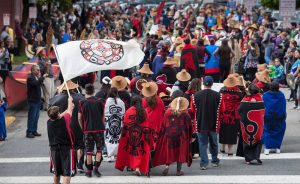The Anasazi flute is a type of prehistoric end-blown flute discovered in a cave in Arizona´s Prayer Rock Valley in the United States. Today, many replicas have been created and are played.
Finding the flutes
The Anasazi flutes were found in 1931 by an archaeological expedition led by Earl H. Morris. The team investigated a total of 15 caves. In the largest of the caves, they discovered several wooden flutes, and the site has since then been known as the Broken Flute Cave.
Age
The flutes found in the cave was initially dated to between 620 and 670 AD.
Material
The flutes were made from Box elder (Acer negundo) which is a type of maple.
Configuration
The flutes are end-blown and have six finger holes.
Having six finger holes distinguishes them from the Hopi flutes, which have only five.
Association with Kokopelli
The Anasazi flute is believed to be associated with the deity Kokopelli. Kokopelli is a fertility god venerated by some Native American peoples in the southwestern United States, and he has traditionally been depicted as a flute-playing humpback with a notable phallus. In many renderings, he also sports feathers or antenna-like protrusions on his head. In addition to being a fertility god, he is also a trickster god and represents the spirit of music. Kokopelli’s flute-playing is said to chase away the winter and usher in spring. In his role as a fertility god for agriculture, Kokopelli is often depicted together with another flute-player named Paiyatamu, especially for maize-grinding ceremonies.
The oldest known depictions of Kokopelli is from 750-850 AD and he is known to have been venerated by the Hohokam, Yuman and Ancestral Peubloan peoples. The oldest known Kokopelli petroglyph is from circa 1000 AD.
According to one theory, actual long-distance Aztec traders (Pochteca) who frequented the region gave inspiration to the creation of Kokopelli, as they would show up carrying goods in sacks on their backs (hence the humpbacked depictions of Kokopelli) and play flutes to announce themselves as they arrived to a settlement. The theory is highly controversial, partly because the oldest depictions of Kokopelli are older than the major era of Mesoamerican-Ancestral Pueblo trading and the Aztec Empire.
This article was last updated on: September 2, 2020


